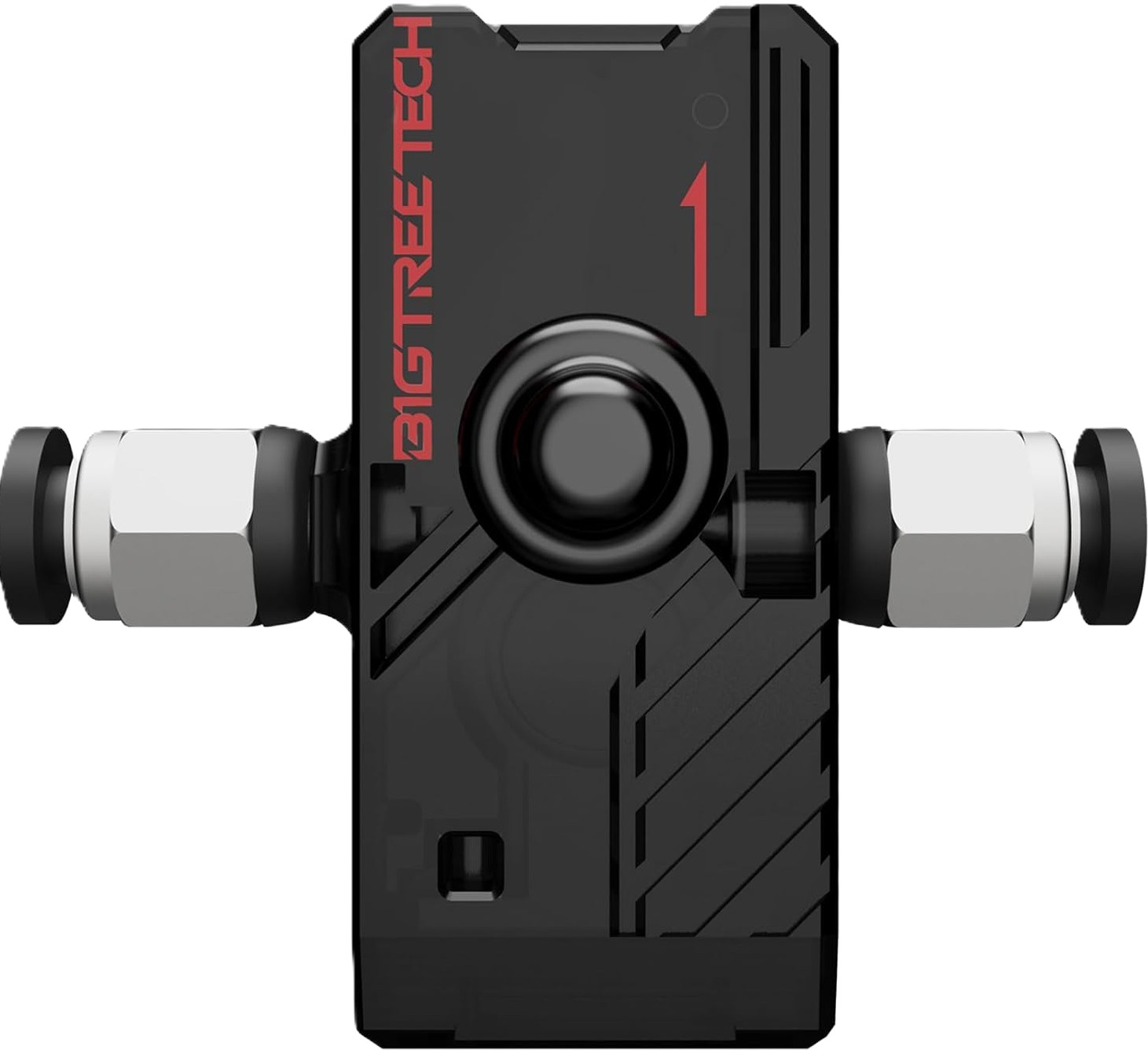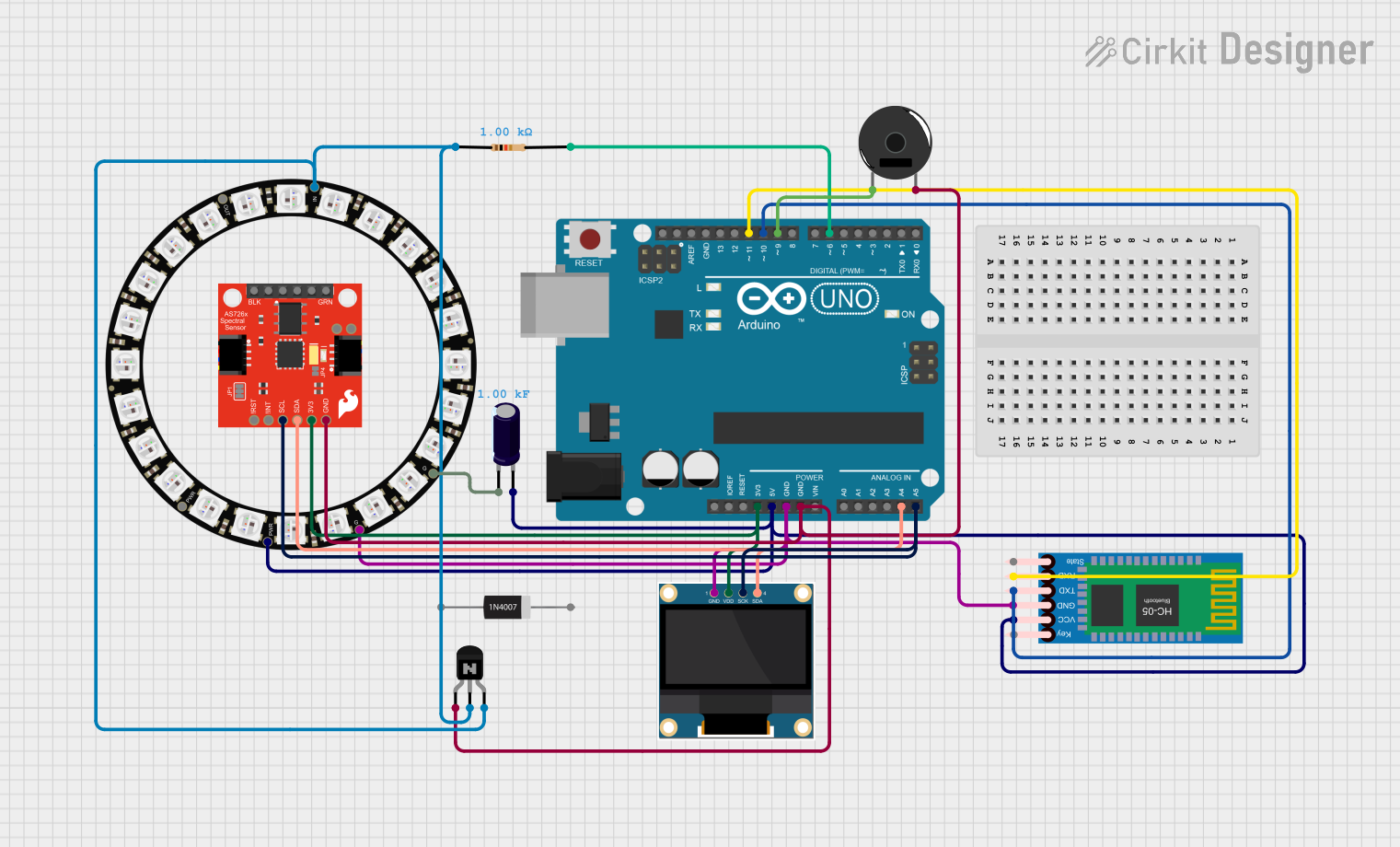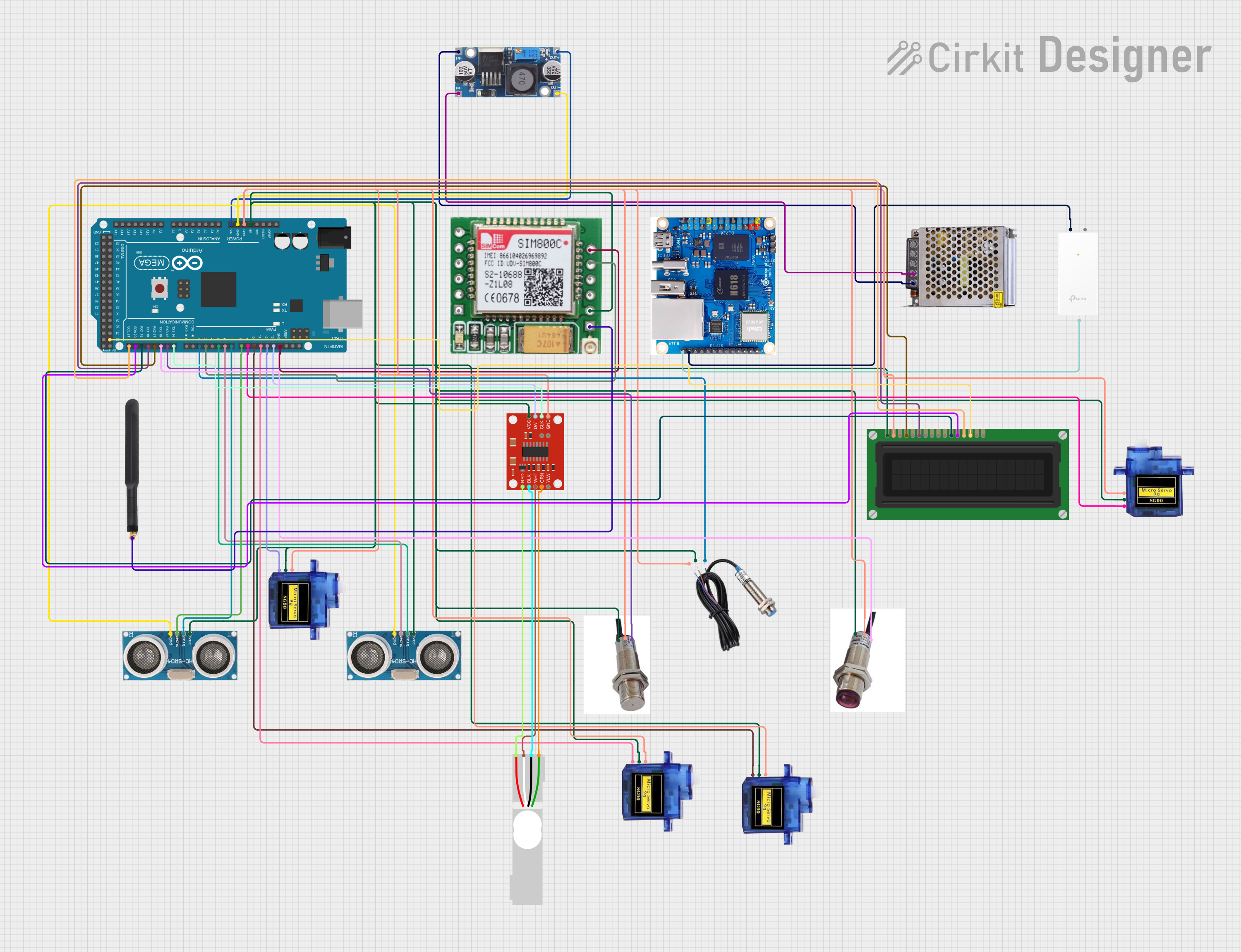
How to Use Smart Filament Detector V2.0: Examples, Pinouts, and Specs

 Design with Smart Filament Detector V2.0 in Cirkit Designer
Design with Smart Filament Detector V2.0 in Cirkit DesignerIntroduction
The Smart Filament Detector V2.0 by BIGTREETECH (Part ID: Black-sfs V2) is a compact and reliable device designed to detect the presence of filament in 3D printers. It ensures uninterrupted printing by pausing the printer when filament runs out, preventing failed prints and wasted material. This component is particularly useful for long-duration prints where filament depletion is a concern.
Explore Projects Built with Smart Filament Detector V2.0

 Open Project in Cirkit Designer
Open Project in Cirkit Designer
 Open Project in Cirkit Designer
Open Project in Cirkit Designer
 Open Project in Cirkit Designer
Open Project in Cirkit Designer
 Open Project in Cirkit Designer
Open Project in Cirkit DesignerExplore Projects Built with Smart Filament Detector V2.0

 Open Project in Cirkit Designer
Open Project in Cirkit Designer
 Open Project in Cirkit Designer
Open Project in Cirkit Designer
 Open Project in Cirkit Designer
Open Project in Cirkit Designer
 Open Project in Cirkit Designer
Open Project in Cirkit DesignerCommon Applications and Use Cases
- 3D Printing: Ensures continuous operation by detecting filament presence.
- Filament Run-Out Protection: Automatically pauses the printer when filament is absent.
- Multi-Material Printing: Assists in switching filaments during multi-material prints.
- Industrial and Hobbyist Use: Suitable for both professional and DIY 3D printing setups.
Technical Specifications
The Smart Filament Detector V2.0 is designed to be compatible with most 3D printers and features robust performance for reliable filament detection.
Key Technical Details
| Parameter | Specification |
|---|---|
| Manufacturer | BIGTREETECH |
| Part ID | Black-sfs V2 |
| Operating Voltage | 3.3V - 5V |
| Signal Output Type | Digital (High/Low) |
| Detection Mechanism | Mechanical switch with spring-loaded arm |
| Connector Type | 3-pin JST (Signal, VCC, GND) |
| Dimensions | 30mm x 15mm x 10mm |
| Mounting Options | Screw holes for secure attachment |
| Filament Compatibility | 1.75mm filament (default) |
Pin Configuration and Descriptions
The Smart Filament Detector V2.0 uses a 3-pin JST connector for interfacing with the 3D printer's control board.
| Pin Name | Description | Notes |
|---|---|---|
| Signal | Digital output signal (High/Low) | High = Filament present, Low = Filament absent |
| VCC | Power supply input (3.3V - 5V) | Connect to the control board's power source |
| GND | Ground | Common ground with the control board |
Usage Instructions
How to Use the Component in a Circuit
Wiring the Detector:
- Connect the Signal pin to the filament detection input pin on your 3D printer's control board.
- Connect the VCC pin to a 3.3V or 5V power source on the control board.
- Connect the GND pin to the ground pin on the control board.
Mounting the Detector:
- Secure the detector near the filament path using the provided screw holes.
- Ensure the filament passes through the detector's spring-loaded arm.
Configuring the Firmware:
- Enable filament run-out detection in your 3D printer's firmware (e.g., Marlin or Klipper).
- Specify the pin used for filament detection in the firmware configuration file.
Important Considerations and Best Practices
- Ensure the detector is securely mounted to prevent misalignment during operation.
- Use the correct voltage (3.3V or 5V) to avoid damaging the detector.
- Regularly check the spring-loaded arm for wear and tear, especially in high-use environments.
- Test the detector's functionality before starting a long print to ensure proper operation.
Example Code for Arduino UNO
The following example demonstrates how to interface the Smart Filament Detector V2.0 with an Arduino UNO for testing purposes.
// Smart Filament Detector V2.0 Test Code
// Connect the Signal pin to Arduino pin 2, VCC to 5V, and GND to GND.
#define FILAMENT_SENSOR_PIN 2 // Pin connected to the Signal pin of the detector
void setup() {
pinMode(FILAMENT_SENSOR_PIN, INPUT); // Set the sensor pin as input
Serial.begin(9600); // Initialize serial communication for debugging
}
void loop() {
int sensorState = digitalRead(FILAMENT_SENSOR_PIN); // Read the sensor state
if (sensorState == HIGH) {
// Filament is present
Serial.println("Filament detected.");
} else {
// Filament is absent
Serial.println("No filament detected!");
}
delay(500); // Wait for 500ms before checking again
}
Troubleshooting and FAQs
Common Issues and Solutions
| Issue | Possible Cause | Solution |
|---|---|---|
| Detector not responding | Incorrect wiring or loose connections | Verify all connections and ensure proper wiring. |
| False filament absence detection | Misaligned filament or damaged arm | Check alignment and inspect the spring-loaded arm for damage. |
| Printer does not pause on filament run-out | Firmware not configured correctly | Ensure filament detection is enabled in the firmware and the correct pin is specified. |
| Detector not powered | Incorrect voltage or disconnected VCC | Confirm the VCC pin is connected to a 3.3V or 5V source. |
FAQs
Can this detector work with 2.85mm filament?
- No, the Smart Filament Detector V2.0 is designed for 1.75mm filament. Modifications may be required for other filament sizes.
Is this detector compatible with all 3D printers?
- It is compatible with most 3D printers that support filament run-out detection. Check your printer's control board for compatibility.
How do I clean the detector?
- Use a soft brush or compressed air to remove dust and debris. Avoid using liquids that may damage the internal components.
Can I use this detector with a 12V power supply?
- No, the detector operates at 3.3V to 5V. Using a higher voltage may damage the component.
By following this documentation, you can effectively integrate the Smart Filament Detector V2.0 into your 3D printing setup, ensuring reliable and uninterrupted printing.